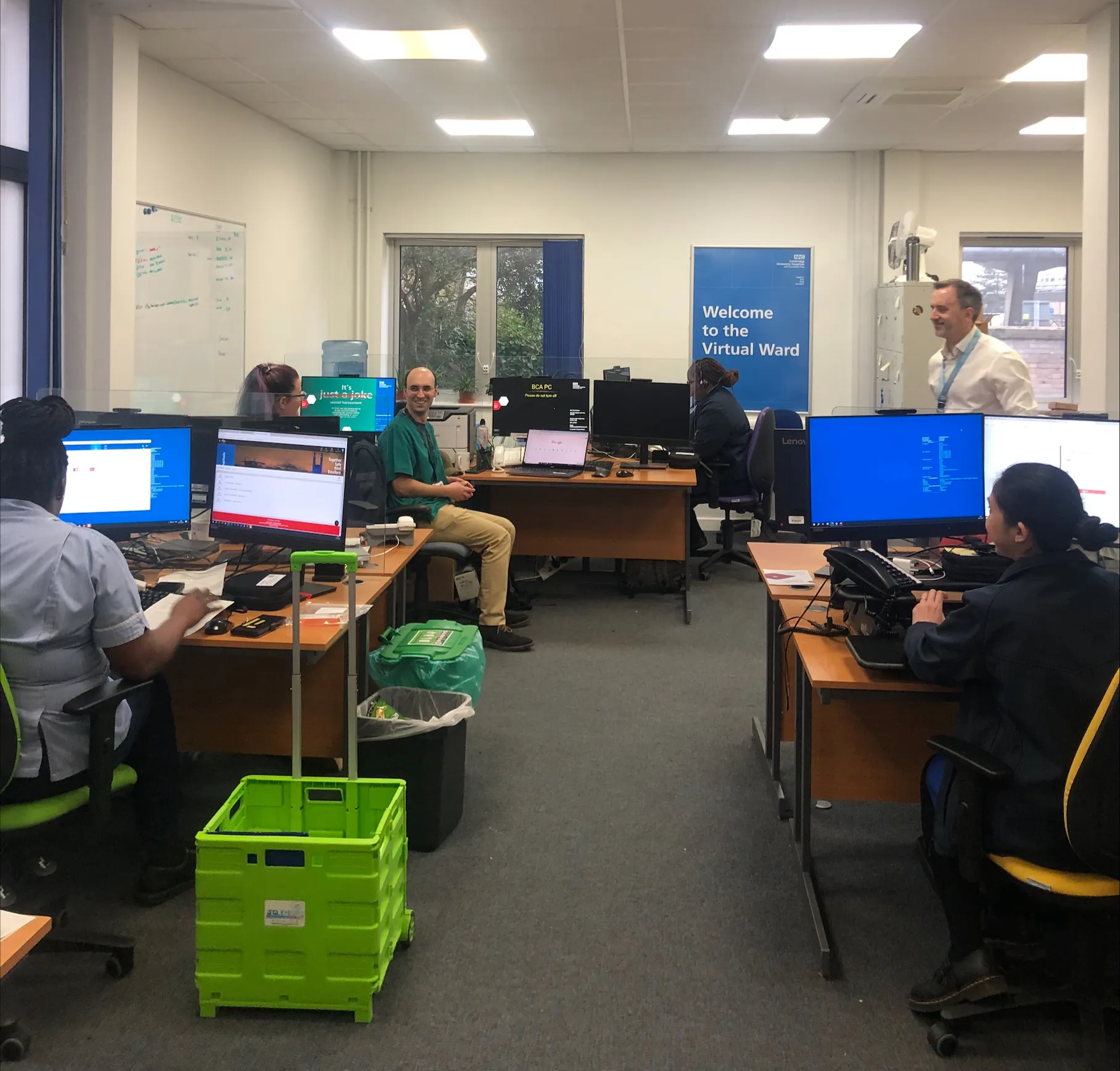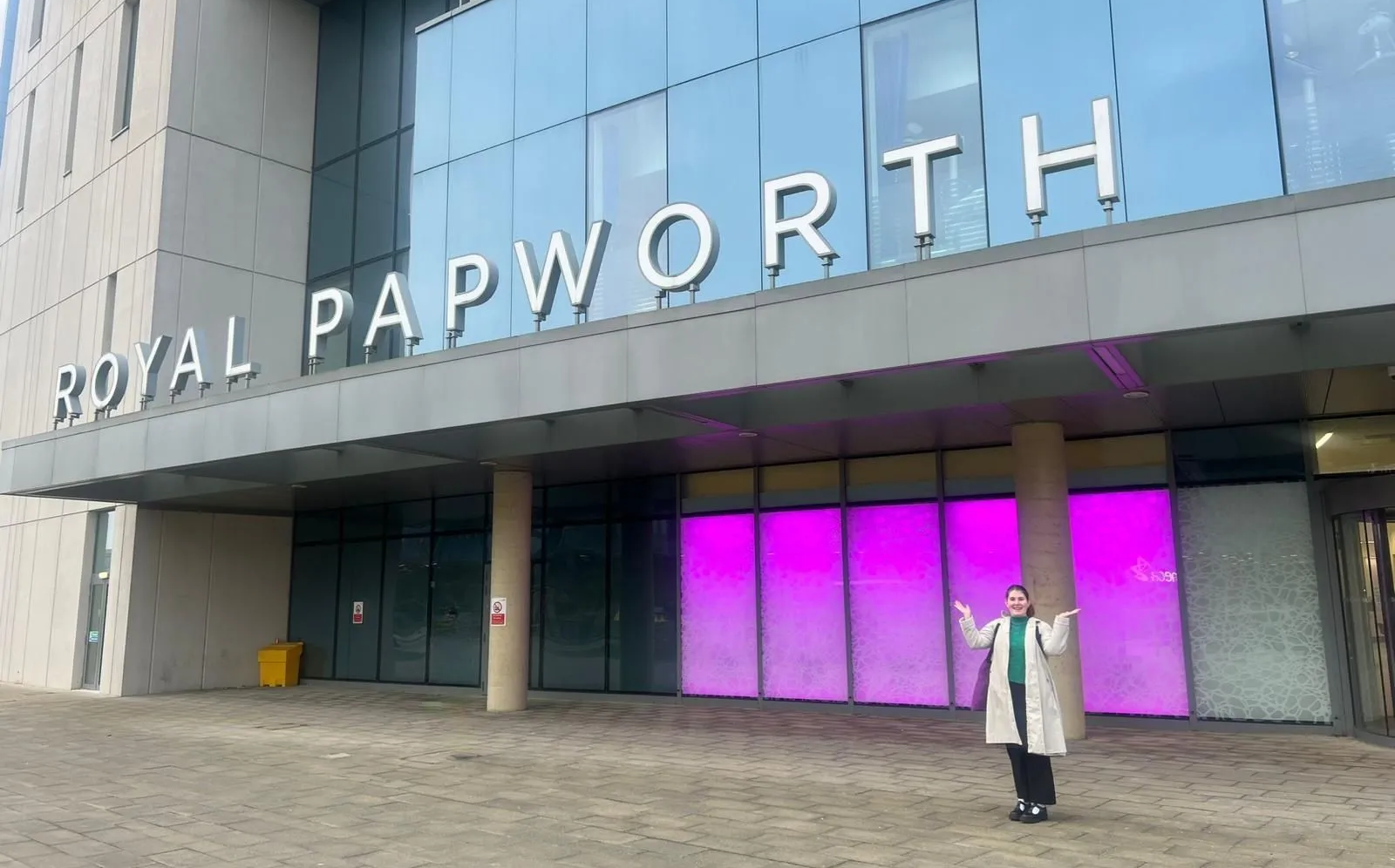Hospital of the Future: post-match analysis of our Cambridge hospitals visit

Research Assistant
Reform’s Hospital of the Future project is well underway — our framing paper launched at the end of last year, fascinating interviews have occurred (thank you to all our wonderful interviewees) and recommendations are brewing.
On Friday, Rosie Beacon, Reform’s Head of Health, and I were excited to visit two hospitals in Cambridge, thanks to our hosts at Addenbrooke’s Hospital and Royal Papworth Hospital. Here, we got a first-hand look at some of the innovative work happening now which will surely be core components of the Hospital of the Future…
First, at Addenbrooke’s Hospital, part of Cambridge University Hospitals NHS Foundation Trust, we dove into the world of virtual wards, which enable hospital-level care in the comfort of patients’ homes, facilitating earlier discharges from hospital or preventing hospital admissions altogether. Here, we toured the virtual ward HQ, where the clinical team — that day made up of one emergency medicine consultant, one junior doctor, and five nurses — were treating and managing ~50 patients from one standard looking office (pictured).
Photograph: Addenbrooke’s Hospital Virtual Ward HQ

Now, how do the team actually provide this hospital-level care in patient’s homes? Great question — through remote monitoring data (recorded by wearable devices and monitored by nurses); a 24/7 phone service for patients or their loved ones to call whenever they need; daily appointments in the hospital, on the phone or in the patient’s home; and the prescription of treatments, delivered in the home whenever possible.
Safe to say, we were very impressed by this operation and its commitment to continuous improvement. This is before we even learnt about their exceptional patient satisfaction scores, hospital bed days saved and plans to scale the virtual ward programme.
Next, we toured the Royal Papworth Hospital — a specialist heart and lung hospital — learning about some of their innovative work and the culture required to encourage a similar approach.
Photograph: myself, Alice Semark, in front of Royal Papworth Hospital

We learnt about Papworth’s pacemaker remote monitoring programme, which enables, amongst other things, earlier detection of atrial fibrillation — i.e. irregular heart rhythm — ensuring more timely interventions. We also met the lead of their community sleep apnoea clinics, who travels throughout the East of England teaching patients how to properly use their treatment. Lastly, we were shown how the physical hospital building was designed to ensure maximum efficiency, from the quick offloading of ambulance patients to the intentional locating of intensive care opposite surgical theatres.
To end, here are three facts I haven’t been able to stop thinking about since I learnt them on Friday, shared by some of the professionals who kindly showed us around and answered our questions:
- The readmission rate of CUH virtual ward patients (within 30-days for the same issue) is 6-10% compared to 12% for Addenbrooke’s Hospital patients generally.
- Now the virtual ward is up and running, the cost of a virtual ward bed day is around £90 versus around £300 a day for a bed day inpatient at Addenbrooke’s hospital.
- Sleep problems — resulting in drowsiness while driving, driver errors or falling asleep at the wheel — are now the leading cause of car accidents in the UK.
So although it is no secret NHS hospitals are in crisis, there is reason for optimism. Incredible dedication, innovation and excellence exists throughout the health system, as shown by our visit last Friday. And the Hospital of the Future will surely capitalise on the sort of innovative work we saw in Cambridge, as well as the ‘can do’ attitude exemplified by everyone we met.
